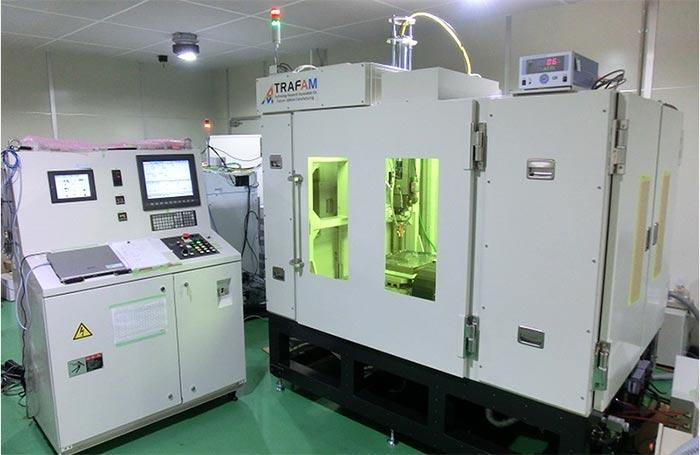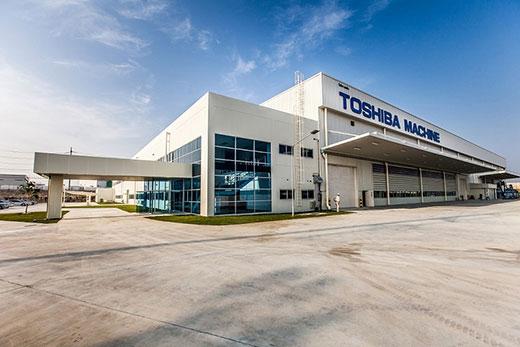It’s rare to see technology sectors advance as quickly as metal 3D printing has. Until very recently, the technology was lagging a bit behind other forms of 3D printing. Its cost, plus the size of the printers required, limited it mostly to large industrial companies, but just in the last few months there’s been a burst of innovations making metal printers smaller, cheaper and more accessible. From startups like Desktop Metal to major corporations like Additive Industries, this year’s major focus seems to be on advancing metal 3D printing.
The latest company to announce a new metal printer is Toshiba Corporation, which has, in conjunction with its machine tools unit Toshiba Machine, developed a prototype for a metal printer that promises to be ten times faster than most powder bed fusion sintering printers.
The new prototype will be showcased at Monozukuri Matching Japan 2015, taking place in Tokyo December 2-4. The printer, which utilizes laser metal deposition technology, can work with a variety of metals including iron, stainless steel and Inconel, and its key selling point, its speed, was achieved thanks to Toshiba’s knowledge of fluid simulation technology. The corporation developed a nozzle that reduces the area to which the metal particles are deposited, allowing for the laser beam to precisely focus in on the tiny area of deposition. According to Toshiba’s internal testing, the printer can achieve a fabrication speed of 100cc per hour with an 800-watt laser. It’s also capable of building larger structures at a lower cost than currently available methods.
Toshiba, which hopes to have the printer on the market around 2017, is working on improving the prototype to achieve even higher speeds and precision, as well as fine-tuning it to interact with 3D CAD software. In addition to marketing the printer to customers, the company aims to use it to manufacture parts for social infrastructure systems to help them improve their production efficiency.
The new metal printer marks Toshiba’s entrance into the 3D printing market. It’s surprising that the massive corporation, which has a firm hold on other machining sectors such as die casting and injection molding, hasn’t already established itself in 3D printing, but its promise to make metal 3D printing both faster and less expensive should be very appealing to customers. That’s the goal of Japan’s Ministry of Economy, Trade and Industry, whose program “Technological Development for Next-Generation Industrial 3D Printers and Ultra-High-Precision 3D Shaping Systems” sponsored the development of Toshiba’s new printer. If metal 3D printing continues to grow at the rate that it has been, the technology should look drastically different by 2017, but Toshiba appears to have gotten a pretty good head start.
What are your thoughts on Toshiba entering the market in 2017? Let us know in the Toshiba 3D Printer Forum on 3DPB.com.
Subscribe to Our Email Newsletter
Stay up-to-date on all the latest news from the 3D printing industry and receive information and offers from third party vendors.
You May Also Like
Profiling a Construction 3D Printing Pioneer: US Army Corps of Engineers’ Megan Kreiger
The world of construction 3D printing is still so new that the true experts can probably be counted on two hands. Among them is Megan Kreiger, Portfolio Manager of Additive...
US Army Corps of Engineers Taps Lincoln Electric & Eaton for Largest 3D Printed US Civil Works Part
The Soo Locks sit on the US-Canadian border, enabling maritime travel between Lake Superior and Lake Huron, from which ships can reach the rest of the Great Lakes. Crafts carrying...
Construction 3D Printing CEO Reflects on Being Female in Construction
Natalie Wadley, CEO of ChangeMaker3D, could hear the words of her daughter sitting next to her resounding in her head. “Mum, MUM, you’ve won!” Wadley had just won the prestigious...
1Print to Commercialize 3D Printed Coastal Resilience Solutions
1Print, a company that specializes in deploying additive construction (AC) for infrastructure projects, has entered an agreement with the University of Miami (UM) to accelerate commercialization of the SEAHIVE shoreline...































